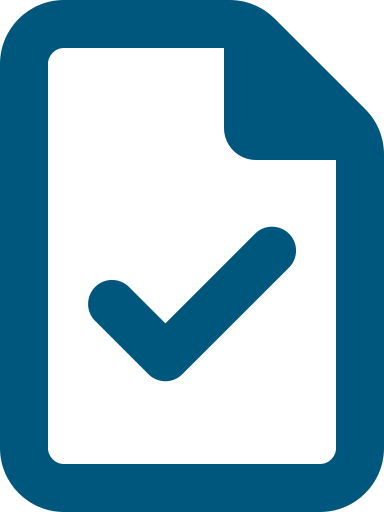What is the outcome you need to achieve?
The provider must ensure that critical information relevant to the delivery of funded aged care services to individuals is communicated effectively to the individuals, between aged care workers delivering the services, with supporters of the individuals and other persons supporting the individuals and with health professionals involved in the individual’s care.
The provider must ensure that risks to individuals, and changes and deterioration in the condition of individuals are escalated and communicated as appropriate.
Updates to guidance
An updated version of the strengthened Standards was published by the Department of Health, Disability and Ageing on 18 February 2025. Please see here for more information Strengthened Aged Care Quality Standards – February 2025 | Australian Government Department of Health, Disability and Ageing.
The Commission is currently updating our guidance content to reflect these changes. Please ensure you check back regularly.
Actions
The provider implements a system for communicating structured information about individuals and their funded aged care services that ensures critical information is effectively communicated in a timely way to aged care workers, supporters of the individual, other persons supporting the individuals and health professionals involved in the individual’s care.
The provider’s communication system is used when:
- the individual commences receiving funded aged care services
- the individual’s needs, goals or preferences change
- risks emerge, there is a change, deterioration or an incident that impacts the individual
- handover or transitions of care occur between aged care workers or others involved in the individual’s care.
The provider implements processes for individuals, supporters of individuals and health professionals involved in the individual’s care to escalate concerns about the individual’s health, safety or wellbeing.
The provider implements processes to:
- correctly identify and match individuals to their funded aged care services
- provide Care Statements to individuals in residential aged care.
Why is this outcome important?
Outcome 3.3 explains providers’ obligations to communicate critical information*, where appropriate to the delivery of care and services, to older people and those involved in their care and services in a timely* manner. It also outlines how important effective communication is with older people, workers*, health professionals*, supporters and others the older person may want to involve, such as family and carers*, to raise concerns.
Timely* sharing of critical information* with workers*, older people, their supporters, others they want to involve and health professionals* helps you to provide safe and quality care* and services. This includes:
- during transitions of care*
- when an older person’s condition deteriorates
- when an older person has communication barriers*.
Putting in place effective processes* for sharing critical information* will help you make sure everyone involved in the older person’s care are informed about their needs. Outcome 3.3 highlights how important it is to share information with older people in a way that they understand and meets their communication needs and preferences.
Care statements are provided to older people in residential aged care. They play an important role in keeping older people, their supporters and others they want to involve, regularly* informed about the care and services they receive. Older people and their supporters should find it easy to access care statements, so they can make informed decisions about the care they receive.
Providers must have processes* in place to make sure older people are correctly identified and matched to appropriate care and services. This helps make sure older people receive care that meets their unique needs, goals, and preferences*.
You need to give focus to:
- effective communication of critical information*
- timely* communication
- formal processes* for escalating concerns about older people’s health and wellbeing*
- processes* to:
- identify and match older people to their care and services
- provide care statements to older people in residential aged care.
Updates to guidance
An updated version of the strengthened Standards was published by the Department of Health, Disability and Ageing on 18 February 2025. Please see here for more information Strengthened Aged Care Quality Standards – February 2025 | Australian Government Department of Health, Disability and Ageing.
The Commission is currently updating our guidance content to reflect these changes. Please ensure you check back regularly.
Key tasks
Providers
Providers
Put in place a communication system*.
This system* should include processes* that make sure:
- the older person and those involved in their care are provided with critical information* relevant to the delivery of their care and services. This can include their supporters, family, carers*, workers* and health professionals*. Information needs to be shared in a timely* manner. This will help make sure older people receive the care and services they need. Critical information* can include:
- information in a person’s care and services plan* when they start receiving care and services (Outcome 3.1)
- risks and control strategies (Outcome 2.4)
- incidents* that can affect an older person (Outcome 2.5)
- clinical information. For example, comprehensive care* needs, changes or deterioration* that can affect an older person (Outcome 5.4).
- transitions of care* (Outcome 3.4).
- you correctly store older people’s records, such as care and services plans*, in your information management system* (Outcome 2.7). Make sure you can identify these records, so the right records are matched to the right person. For example, you could use the older person’s Healthcare Identifiers*.
- you correctly identify and match older people to their care and services. You can do this can using the older person’s full name, date of birth and their Healthcare Identifiers*. For example, make sure you follow these processes* in situations where you are:
- delivering care and services to an older person. For example, before administering medication or referring an older person to an allied health* or health professional*.
- generating clinical handover, transfer or discharge information. This can also include information about an older person’s agreement, fees and invoices (Outcome 1.4).
- there are ways to escalate concerns about the older person. Older people, their supporters, families, carers*, and health professionals* involved in the older person’s care need to be able to escalate concerns. Contact details for those involved in the care and services of the older person should be kept up to date and easily accessible. This information needs to be stored using your information management system* (Outcome 2.7).
- workers* can communicate and share information with older people safely and effectively. They should base this on each older person’s language and communication needs and preferences.
If you provide residential care and services, your communication system* needs to have processes* to prepare and provide care statements to older people.
If you provide home care and services, make sure you have processes* to communicate clinical information to older people, supporters and other service providers.
Make sure workers* are supported to communicate for safety and quality.
You can support workers* by developing communication guides, training and strategies that are part of your organisation’s clinical governance* framework (Outcomes 2.9 and 5.1). It may be helpful to develop a list of common scenarios and how workers* can share information in each situation.
Make sure workers* use the communication system*:
- when the older person starts receiving care and services
- when the older person’s needs, goals and preferences* change. You should regularly* partner with the older person and those involved in their care and services (Outcome 2.1).
- when risks to the older person have been found (Outcome 2.4)
- when there is a change of circumstance, deterioration*, or after an incident* has occurred (Outcome 2.5)
- during handover or transitions of care*. For example, during a transfer to hospital (Outcome 3.4). For residential service providers, the guidance for Outcome 7.2 has more information on how you support older people during transitions.
- to correctly identify and match older people to their care and services.
When workers* use the processes* and systems* in place to communicate for safety and quality, encourage workers* to consider:
- what information they need to share
- how quickly they need to escalate information
- who should be involved
- how they can best share this information. For example, it may be better to make a phone call, send an email or have a conversation in person. Make sure these communications are documented in the information management system*. Workers* should consider each older person’s language and communication needs and preferences (Outcome 1.1) and share information in a way that they understand (Outcome 1.3). This can include:
- using strategies such as simple language, large text and images as recommended by allied health* professionals (where relevant)
- language services like interpreters and translators
- routinely checking that the older person and those involved in their care have understood the information correctly.
You should record information that has been shared in progress notes or other documents in line with your information management system* (Outcome 2.7).
Monitor that workers* communicate for safety and quality.
To check if your communication system* is effective, you can review:
- older people’s care and services (Outcome 3.1) such as care and service plans* and progress notes.
- complaints* and feedback* (Outcome 2.6)
- incident* information (Outcome 2.5).
Look for situations where:
- older people didn’t know or understand something
- critical information* was not shared.
Also, talk with older people, their supporters and others they may want to involve, such as families and carers*, about the care and services they receive (Outcome 2.1). Ask them if they know and understand information about their care and services, including critical information*. These conversations can then inform continuous improvement* actions and planning (Outcome 2.1).
Assess if workers* are following your quality and communication systems* (Outcome 2.9). You can do this through quality assurance and system* reviews.
If you find any issues or ways you can improve through your reviews and assessments, you need to address them. If things go wrong, you need to:
- practise open disclosure* (Outcome 2.3). This means being open about what has gone wrong. Share what went wrong with older people, their supporters and others they may want to involve, such as family and carers*
- put in place strategies to mitigate the risk of things going wrong again.
The guidance for Outcome 2.3 has more information on monitoring the quality system*.






